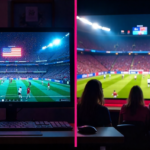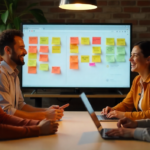A user downloads a highly recommended app; the interface loads, but none of the buttons are labeled, and swiping around offers no direction. All attempts to post, chat, or interact are futile because the screen offers only silence or gibberish. Of course, the user feels stuck, excluded, and even a tad silly. Well, the CEO of Soul, Zhang Lu, realized that this is the reality for millions of users who live with visual impairments or other disabilities and who try to navigate the digital world.
Yes, there are plenty of screen reader tools, but these are utterly useless or only offer marginal reprieve if the app/digital products are not built to be compatible with these tools. Unfortunately, for most designers and developers, the pressing need is to create a product that reaches a wide audience. But, in reality, the goal should be to serve the entire user base equitably.
The sad part is that, for some reason, the ingrained idea is that accessibility is a favor for a small group. This needs to be replaced with the ethos that “accessibility for all” is the baseline for thoughtful, professional, human-centered work.
Soul Zhang Lu started the platform’s “Visible Accessibility” initiative to provide a succinct blueprint for this kind of digital inclusion. Soul App chose to prioritize accessibility ahead of the Global Accessibility Awareness Day and China’s National Disability Assistance Day — not just for visibility, but to spark long-term, systemic change.
Soul Zhang Lu’s team clarified that when building for everyone, it is crucial to ask questions like how accessible is the app/platform in real-world usage? Do users have access to the tools they need to participate fully?
Soul answered these questions by launching a full-scale accessibility audit and adaptation process, ensuring their app worked seamlessly with screen readers and navigation tools for visually impaired users. This wasn’t just about brand reputation or awards. It was about leadership and taking initiative when the default approach was insufficient.
When deciding how to approach the problem and fix it, Soul Zhang Lu realized that technology alone wouldn’t solve the problem, albeit intentional design certainly would. For instance, most developers believe that built-in tools like TalkBack (Android) or VoiceOver (iOS) can cover inclusivity-related shortcomings.
But in practice, if the app interface isn’t properly labeled or if buttons return meaningless phrases like “button_03,” screen readers become useless, and that creates a digital divide no shortcut can fix. Soul’s team addressed such issues head-on. They didn’t just rely on default tools; they customized their app interface to work with those tools. The team started by recognizing that assistive tech is only helpful when developers design intentionally for it.
Soul App’s approach is all about blending empathy with innovation. After all, innovation does not occur in a vacuum. It’s only possible when people helming the project understand users’ frustrations and design solutions that feel natural to them.
What made Soul Zhang Lu’s initiative effective wasn’t just technical excellence; it was listening. Accessibility-focused user communities and communication groups were formed where visually impaired users could share feedback directly with the product team. From this feedback came refinements, new features, and a clearer understanding of what accessibility really looks like from the user’s perspective.
According to Soul’s design team, listening isn’t just a soft skill here; it’s the key to product-market fit for all users. Everybody who is contributing to digital products should consider what a feedback loop like this could do for their platform.
Soul’s success in this matter can be attributed to one key factor: Instead of treating accessibility as a feature, they turned it into the foundation upon which the system functions. Soul Zhang Lu’s team ensured that users would be afforded complete accessibility from their very first interaction. To make this happen, clear navigation and screen reader compatibility were introduced at the point of user registration and onboarding.
Subsequently, Soul’s developers ensured that content creation and sharing would be just as intuitive for visually impaired individuals as for regular users. Also, chat features, notifications, and community events like parties or matching activities were made fully accessible for all. This enhanced social engagement for everybody using the platform. Finally, the team allowed users to have independent control over personalization features through profiles and setting management.
Through this acute focus on engagement at every point of interaction and usage, Soul Zhang Lu has set an example for project managers, UI/UX experts, coders, designers, investors, and even regular users. The fact is that partial accessibility is just not enough; every touch point needs to work for inclusion to become real, and everybody can contribute to this larger picture of complete and uncompromising inclusivity.
One of the most inspiring validations of Soul Zhang Lu’s effort came from a user who goes by the name “Golden Light”. Despite his vision impairment, he has thrived on the platform. Thanks to Soul App’s accessibility culture, he was able to connect with others, explore diverse opinions, and rediscover confidence and expression in a digital space that welcomed him.
Others can emulate the work done by Soul Zhang Lu’s team in a number of actionable ways. For instance, here is what developers can do right now:
- Audit apps using accessibility tools or screen reader simulations.
- Host usability sessions with disabled users, especially those who are visually impaired.
- Prioritize accessibility in the design roadmap, not as “nice to have” but as mission-critical.
- Educate the team by sharing resources, inviting guest speakers with lived experience, and building empathy from within.
- Sharing their wins and challenges to normalize the conversation and help others in the industry.
A vital thing to understand and accept, according to Soul Zhang Lu, is the fact that inclusion is a competitive edge that is good for users and great for business. Accessible design improves usability for everyone. It opens the product to a wider audience, and in doing so, it inevitably strengthens the brand and increases the reach of the product.











